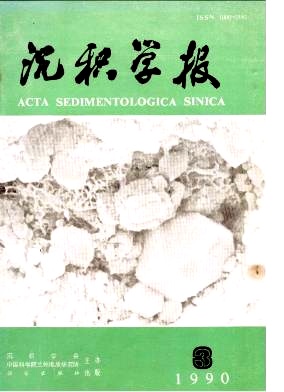OLDLAND AND THEIR FACIES-INDICATING SIGNIFICANCE
- Received Date: 1988-04-20
- Publish Date: 1990-09-10
Abstract: Based on observation and statistical analysis of the textural, structural, grainsize and stratigraphic relationship data of ten profiles, we found six types of debris flow facies: Facies A (Coarser) Debris flow layer, which is the main body of debris flow, has a gravel content 25 percent to 50 percent and suspensio and support framwork. Facies B surface mud layer, which is formed by fane sediment floating up to the surface at flat area after the debris flow stopped, is the contemporaneous out-facies of the erosional layer (Facies B) and not be erosioned. The deposit consists of coarser sediment and has dry polygonal ground sometimes. Facies C Erosional layer, which is formed by fluvial erosion reforming on the surace after the debris flow deposited, The deposit appears loosely and porously, and deposit break hiatus. Facies D Basal mudh layer, which is formed by sedimentary bed paving processes in the earlier stage flood before debrcs flow appears. Facies E Mud layer, which is the main deposit body of mud flow in leoss area. By means of statistical analysis, nine local facies models had been found that can satisfy the statistical equire. The facies C.D.A. and B are the most common layers appear in deposit. A complete debris flow succession consists of facies D, A and B layer. The facies C layer is formed by later fluvial erosion and sometimes replaces the facies B. Therefore, a typical facies model of debris flow consists of C, D, A and B layer. The above mentioned models show some difference at different landforms. For example, at the top of debris flow fan, the deposition is strong and the later stage erosion is strong also, therefore, facies A and facies C develope, but on facies B and D. In this situation, facies succession is AC-AC type. At middle and base of a fan, the deposit shows typical facies model, with a well developed facies A, an obvious facies D and a less developed facies C. The facies B sometimes developes at both sides of debris flow valley. The AB planes of gravel in sediment show upper course forward fabric feature. At the margin and flanks of debris flow fan, facies B is well formed, but no fecies C, because the flurial erosion is weak. Apart from the dif- ferent fades succession asemblege in space, the different as emblege of succession appears in different time in some profile, this shows a change in eavironment of the drainage area. The measured profile of Quanjia Valley shows seven successions, which are consisted by facies C developed group and no facies C group, which illustrates the change of climatic cndition.
| Citation: | Cui Zhijiu, Xiong Hei gang. OLDLAND AND THEIR FACIES-INDICATING SIGNIFICANCE[J]. Acta Sedimentologica Sinica, 1990, 8(3): 128-140. |






 DownLoad:
DownLoad: